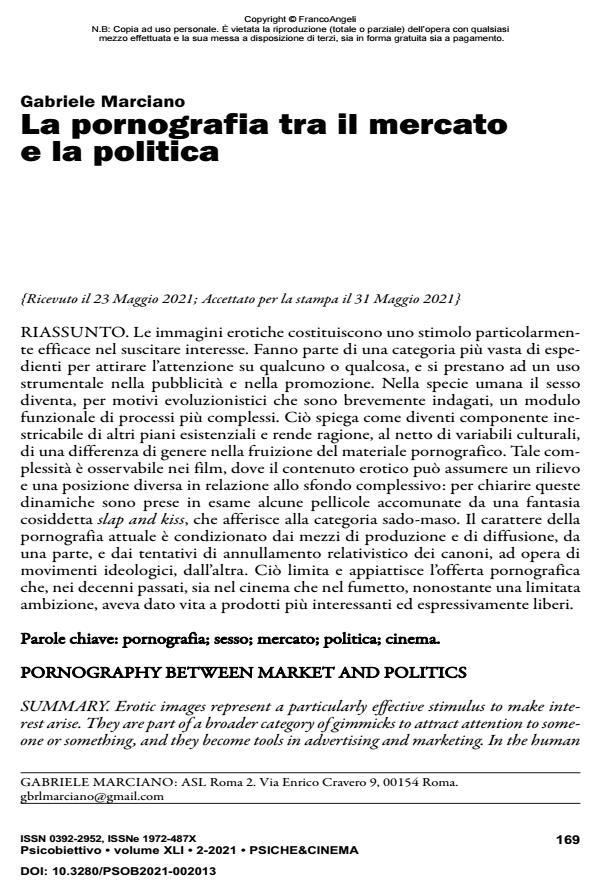Pornography between market and politics
Journal title PSICOBIETTIVO
Author/s Gabriele Marciano
Publishing Year 2021 Issue 2021/2
Language Italian Pages 12 P. 169-180 File size 128 KB
DOI 10.3280/PSOB2021-002013
DOI is like a bar code for intellectual property: to have more infomation
click here
Below, you can see the article first page
If you want to buy this article in PDF format, you can do it, following the instructions to buy download credits

FrancoAngeli is member of Publishers International Linking Association, Inc (PILA), a not-for-profit association which run the CrossRef service enabling links to and from online scholarly content.
Erotic images represent a particularly effective stimulus to make interest arise. They are part of a broader category of gimmicks to attract attention to someone or something, and they become tools in advertising and marketing. In the human species, sex becomes, for evolutionary reasons that are briefly investigated, a functional module of other more complex processes. This explains how sex becomes an inextricable component of other existential dimensions and explains, regardless of cultural influence, a gender difference in the approach to pornography. This complexity can be observed in movies, where the erotic content can take on a different importance and position in relation to the overall background. In order to explain these dynamics, some movies sharing a so-called slap-and-kiss fantasy are taken into consideration. The character of current pornography is conditioned by the means of production and diffusion, on the one hand, and by the attempts of relativistic cancellation of every canon, from ideological movements, on the other. These limits and flattens the pornographic offer which, in past decades, both in cinema and comics, despite a limited ambition, had given rise to more interesting and expressively free products.
Keywords: pornography; sex; market; politics; cinema
Gabriele Marciano, La pornografia tra il mercato e la politica in "PSICOBIETTIVO" 2/2021, pp 169-180, DOI: 10.3280/PSOB2021-002013